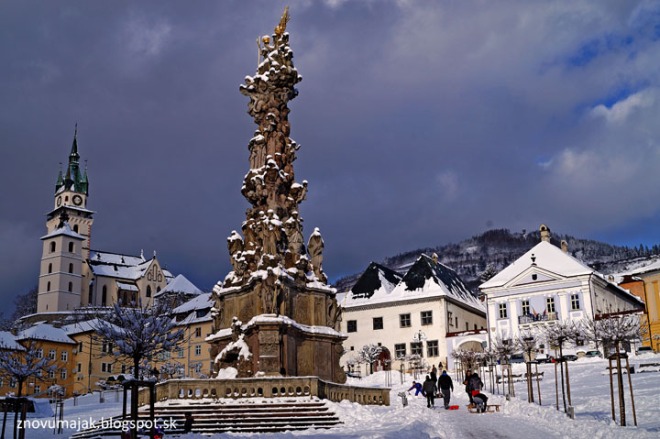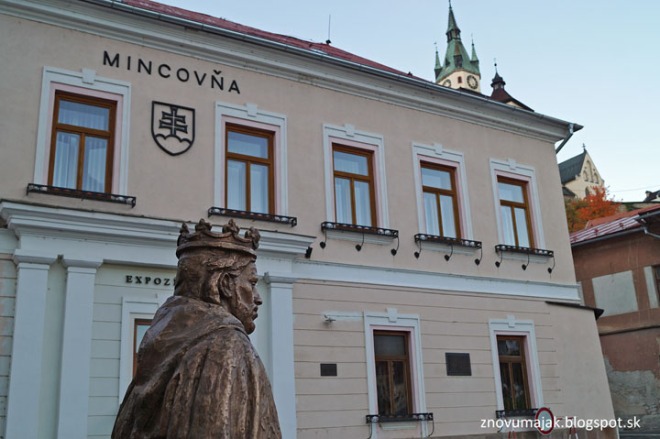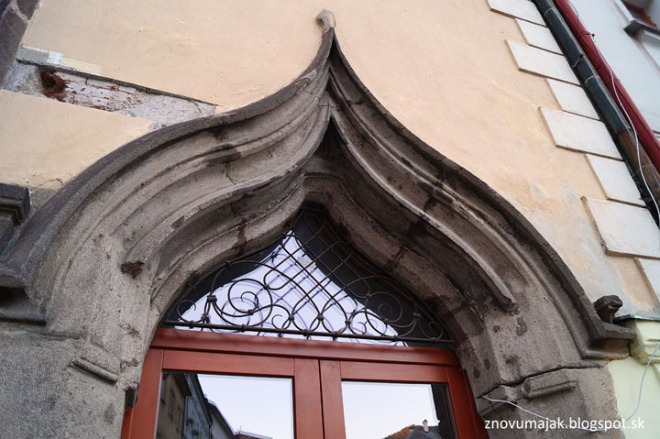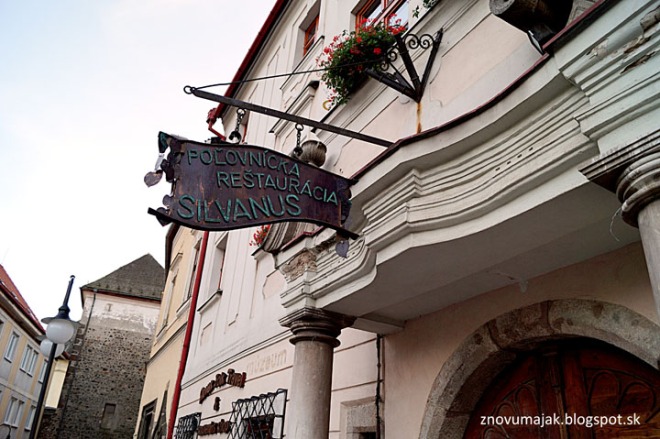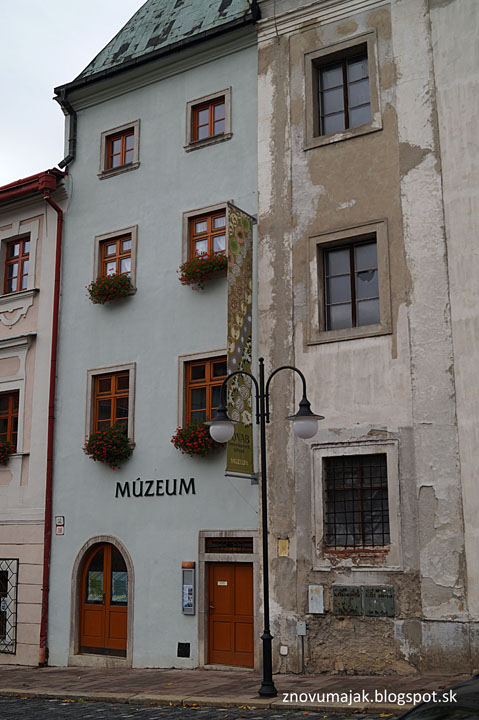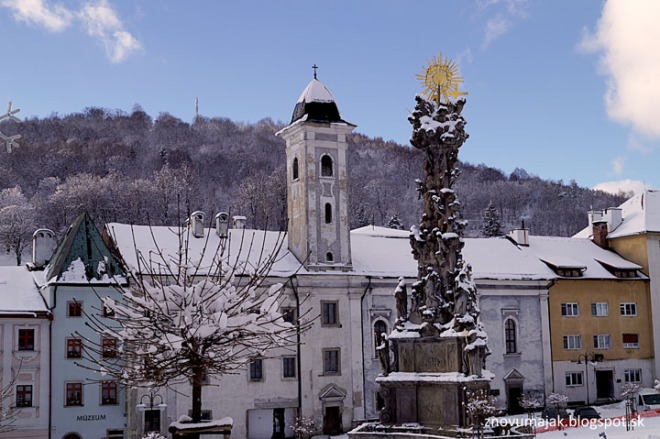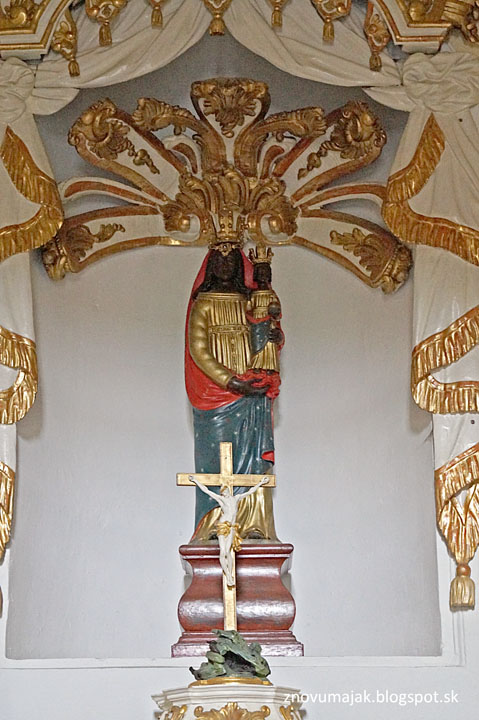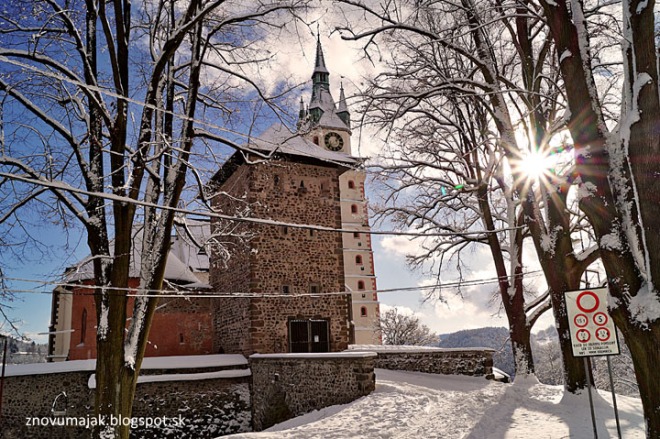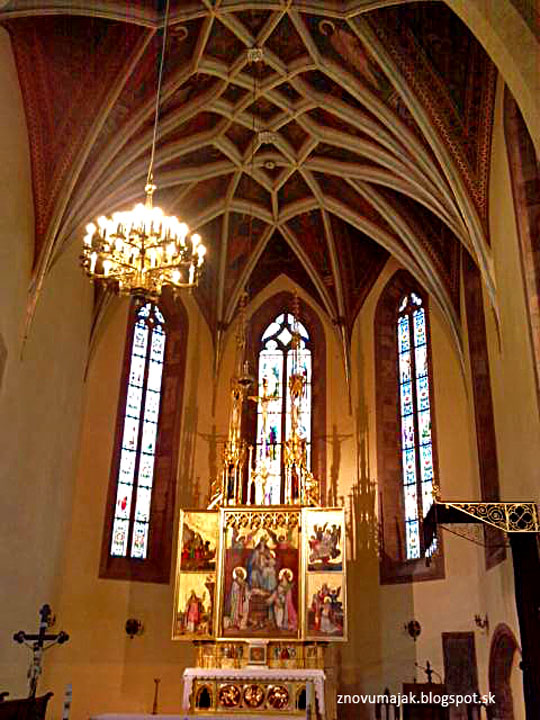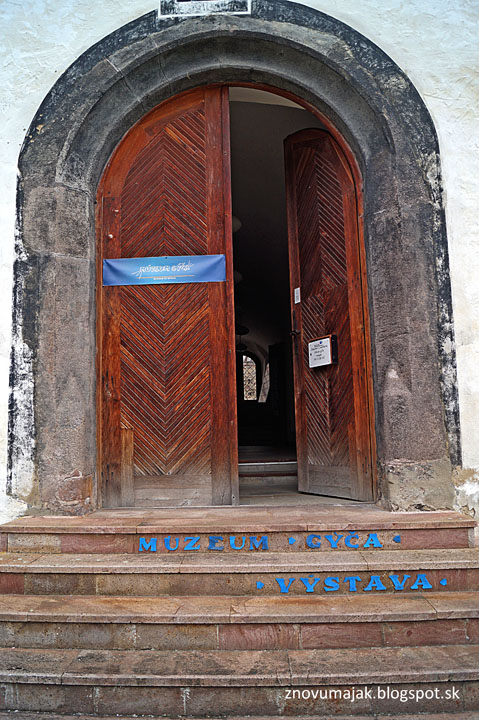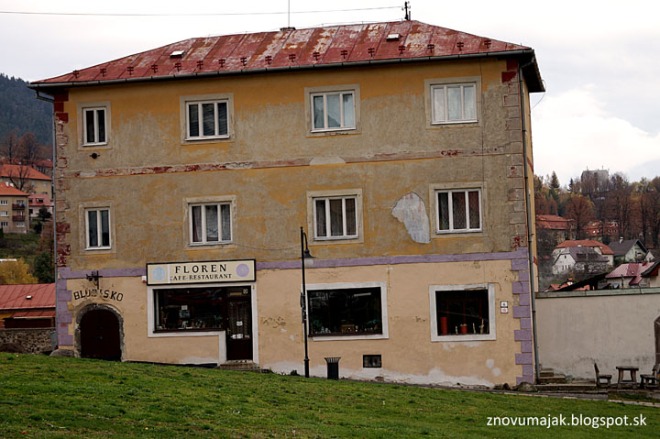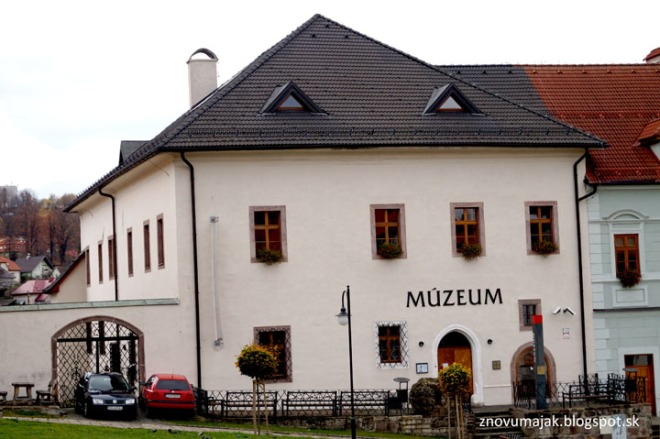See more photos in my Slovak blog
I will guide you through the oldest parts of Kremnica, a medieval town in the heart of Europe. Rich history of this region is due to gold deposits that were mined for centuries in the hills surrounding the town. Kremnica hills are a part of Slovak Central Highlands. It is a volcanic mountain built by Tertiary volcanism. Prevailing rocks are andesites and rhyolites. The highest peak is Fľochová (1318 m). Before we start our tour in this beautiful city, I will tell you briefly its history.
SHORT HISTORY
The analysis of mining wood remains in Šturec showed that the mining existed in this area around year 1050. First, gold was extracted from the surface and later, when the surface stocks were depleted, deeper underground.
As to the settlement of the region, an old folk story tells that for the discovery of all the riches, Kremnica ought to thank a partridge, which lords of Šášov castle shot while hunting in the local mountains. They found nuggets of pure gold in its crop. They began to search the entire region and indeed found the gold that they started to mine. Thus, the region gained enormous wealth, foundation of the town of Kremnica and the emergence of local communities.
Many German miners and metallurgists, who were experienced in modern methods of extraction and processing of ores, came to the region. In 1312, Charles Robert of Anjou became the Hungarian king that was a great benefit for both the Slovak mining and Kremnica. In 1325, he ordered to mint new coins – florins (known also as Kremnica ducats), which became for their quality and gold purity recognized throughout Europe. Later, in 1328, he granted the settlement of Cremnychbana with the privileges of free royal minting and mining town, and founded there the Royal Mint. This Mint is still in operation nearly 700 years and produces a large amount of mintage. Famous ducats of Kremnica were minted without a break for 551 years. New king rules sped up the development of cities and the king reserved the requirement that only Germans can perform administration of Kremnica.
Kremnica had always been the multinational city. A part of the population had a domestic origin and many new settlers came from Italy, Bavaria, Austria, Silesia, Bohemia and Flanders. Kremnica became the seat of the royal mining and Mint Chambers that was in charge of 12 counties. In the oldest period of administration, the town was governed by a reeve and council. Later, by a 100-member administrative committee.
The biggest bloom of the city was evident during the first two centuries of Kremnica existence. The city stood at the forefront of economic and political union of seven Central Slovak mining towns. Since the late 17th century, the state began to interfere in urban administration until the city gradually lost its rights.
Wealth resulting from the mining and mint business showed itself in the image of Kremnica. The newly built castle in the 14th century encircled by a double fortification was a seat of the city administration, as well as the royal mint and mining chamber. Due to security reasons, reserves of precious metals and coins were stored there. There were the castle church, the oldest cemetery, prison, parish, and the town hall. The class of the burghers coming from mining and metallurgical enterprises, as well as the town officials, built a center – a square– under the castle hill, in the 14th century. Gothic stone houses of both passage and atrial type were constructed around the square. In the first quarter of the 15th century, the wall with defensive towers and three city gates, the Upper Gate, the Lower Gate – which is the only one preserved, and Bystrická (Small) Gate, were built around the square. To the north-west corner of the square, the Mint was moved in the first half of the 15th century, with new Chamber Court and key departments. Behind the walls of the square, residential areas of miners, day laborers, and artisans expelled from the square, were created. According to the tax register of 1442, Kremnica had a set of buildings in the castle area (“Der Stadt”), a fortified square with 31 to 36 houses, 9 suburban parts, mining, and metallurgic facilities in the valleys Koler and Soler. The city had about 250 houses and 3500 inhabitants. Gothic houses have undergone a renaissance and later baroque reconstruction.
In the mid 14th century, more than 1,000 kg of gold per year were produced in Hungary, representing 80% of the European production and 1/3 of the world’s production. Kremnica significantly contributed to it, at least to half of this production with 400 kg of gold per year. Since the beginning of the 16th and the 17th century, there has been a decline in gold mining and stagnation of the Mint and city. Gold mining declined in the 19th century and after World War II, only 85 kg of gold per year was harvested. Underground mining of gold was completed in 1970. However, the mint production did not end and minted coins not only for domestic circulation, but also for other countries. With rich production of coins, as well as the work of coiners, medallists, and technologists, and continuing operation for almost 700 years, the Kremnica Mint is a unique phenomenon and pride of Slovakia.
TOUR IN THE HISTORICAL CENTER
We start our tour from the wall of the town, which surrounds the historic core of Kremnica. The wall encircles the area of about 45,000 square meters built in the early 15th century by the order of King Sigismund Louxembourg. The wall is reinforced by two round towers – red and black on the southern corners. In the lower parts of the wall bastions, forms of the key loopholes were preserved. The entrance to the town came to the city through three gates – the Lower, Upper and Small. The last two were broken down in 1872-80. Thanks the painter Béla Angyal, the Lower Gate were saved at the end of the 19th century. Thus, we will enter the historical square through this gate –Lower Gate with Barbican. The whole building is characterized by the early Renaissance plastic art. In addition to the typical fortification marks, it is mainly about the Renaissance semicircular bay window. The top part holds St. Catherine relief with sword, holding a coat of arms of both the city and the state. The sides are equipped with stone slabs with symbols of gold (the sun) and silver (the moon) with mine emblems. At the inner portal of tower, two circular medallions with reliefs of Emperor Ferdinand I and his wife Ann are bricked dated back to 1539. In the 19th century, sculptures of a miner and a coiner were added.
Main Square (Rínok)
Centrally located the main square was created below the town castle, in 14th century. Several original buildings were demolished after World War II., but most of the original Gothic houses are still standing. The dominant features include an impressive Trinity Column from 1765-72, a Franciscan monastery from the 17th century, and a nearly 700-year-old Mint, which has considerably contributed to the development of the town. The square has become a cultural, social and commercial center of the city.
House no. 34/42
In the western part of the square is one of most splendid Gothic houses in Central Slovakia. On the main portal is deployed a richly modeled arch. A similar profile has a three-part window. The origin is estimated around the 15th century.
House no. 33/40
House with a medieval core eventually obtained a late palatial character. The entrance semicircular columned portal carries a statue of Salvatore and Immaculata. The floor bears a “green room” with decorating ornaments of green ink in a Late Renaissance theme. Lunette arches and Tuscan columns are dated to the 17th century.
House no. 32/38
Does not belong to the typical Kremnica burgher´s house. The unusually narrow building grew in height. After 1662 until the mid-19th century belonged to the family of Freyseyssen, and it was enriched by a vault with stucco. The house is an image of late-burgher´s architecture.
Monastery Complex
Franciscan Church
This complex was built on a place of two townhouses in 1653. Church recalls domesticated patterns of Counter-Reformation religious architecture. The main altar with pillared architecture of the cam and the central image of stigmatized St. Francis comes from 18th century. Therein paintings were transferred from the Church of the Blessed Virgin Mary, who was demolished in 1880 due to earth slides. Among paintings is a large image – Assumption of the Virgin Mary, which is one of the most important works of Anton Schmidt, a late baroque painter of the mining towns.
Monastery
On the left of the church, the monastery was originally with two floors. Functional architecture of the monastery had four wings, older floors contain early baroque lunette vaults. The third floor was set after 1703. Thirty years later, the monastery wing walls were founded. A Franciscans library was established in the bastion of fortification. Currently, the monastery is abandoned and deteriorate.
Loretto Chapel
At the time when Franciscan church was not sufficient for a quantity of people who attended, it was necessary to extend it. Franciscan brothers purchased in 1749 a house of Anton Körmendy and his wife Zuzana Eutrozíny, directly adjacent to the church. The Franciscans brought a statue of Our Lady of Loretto, Black Madonna from the Italian Loretto, to whom is the chapel dedicated. The chapel is vaulted by three parts in Prussian vault and is associated with the church and has a separate entrance from the square. The altar architecture has Rococo ornaments. Behind the Loretto chapel, there is a Franciscan corn loft with well-preserved wall paintings.
Column of the Holy Trinity (plague)
One of the most important baroque monuments in Slovakia built between 1765-72 by a Kremnica sculptor of Italian origin, Dionýz Staneti and Austrian sculptor of Bruck, M. Vogerle. The main mission of the monument was to protect the town against plague. The column is characterized by city specifications – patrons of miners and the city – St Barbara, St. Catherine, St. Clement, and Counter-Reformation features (St. Anthony of Padua, St. Joseph, St. Francis Xavier). Statues of St. Sebastian, St. Rochus, St. Charles Borromeo and Santa Rosalia embody protection against plague. Column is almost 22 m tall, has 13 holy sculptures of the size from 2 to 2.5 m, 41 small sculptures, which consists of 28 angels with bodies, 13 seraphims – angel heads, and 11 reliefs. Statues on top represent St. Trinity – God the Father sitting, on his right hand is Christ, and the dove – symbol of the Holy Spirit. Archangel Gabriel holding a lily in his hand, Immaculate Virgin Mary standing on a serpent-wrapped globe.
The composition of the square alongside the baroque plague column is completed by a Baroque fountain located in the northern part, probably from the workshop of Dionýz Staneti. Meteorological pillar built in the early 20th century contains the pressure gauge and hygrometer.
Mint
Has been mentioned since 1442 and is one of the oldest continuously producing enterprises in the world. The mint had originally a character of Gothic fortification incorporated into the city walls. Over time, there have been subsequent changes in different styles. The oldest and most precious is the new Chamber Court, originally one floor buildings with basement grouped around a central courtyard. Currently, the Mint established a mint exposition and old mint technologies in old departments.
Town Castle
As a unique architectural monument of medieval settlements, the castle was declared a national cultural monument. It consists of a collection of buildings from the 14th to 15th century. The dominant building is St. Catherine Church. Karner from the first half of the 14th century had two functions; the lower part of the building served as a charnel house (the oldest of building complex) and the top as a chapel. The walls of the chapel are decorated with Gothic wall paintings depicting scenes from St. Erasmus life. The North Tower of the 2nd half of 14th century with a bridge protected the entrance to the castle from north. The Mining Bastion was originally a semi-circular bastion built within fortification. The Clock Tower was gradually super structured, today there is an exposure of Kremnica bells and founders of bells. The South Tower also called parish connects the castle with the city by an entry staircase. City Hall from the 14th century is the largest secular building in the castle area. At the end of the 19th century it was originally five-floored. Due to the static distortion, it was reduced by two levels. Until now it has retained only the basement and ground floor. City Council met there until 1560. At present there is an exposure of Baroque sculptures, some dating from the Staneti demolished Church of Our Lady in the square.
St. Catherine Church
Was originally founded in the 13th century. There are conserved rich morphological parts – architectural decorations with curly leaves and consoles as well as a baldachin motive. That points out Kremnica connections with rich historical cultural centers, such as St. Stephen Vienna building smelters in 14th century. Figured stone relief fragments with polychrome are high monument “Parler” sculptures, which were probably imported in 15th century from the Sigismund palace in Buda(Pest). The Late Gothic vaults are creating special footings and swallows tails, which marked the Austrian builders. Renaissance tower modifications took place after the fire; it is represented by the Renaissance pulpit. The church is also a place of three late Gothic sculptures, grave slabs and stone epitaphs. A separate Immaculata sculpture from the 2nd half of 18th century comes from the workshop of plague column.
Bella’s House no. 14/2
Based on the Late Gothic features, it is dated to the 15th century. The house has a memorial plaque of composer Jan Levoslav Bella, who lived here in 1869-91.
House no. 542/3 with Diamond Vault
The house of comorian count is a large building with a Late Gothic entrance portal created by the gradual extension to the old house. Mask console with a devil on the south facade dates back to the 14th century. The facades and even inside the house preserve further Gothic stone portals. In 1520, diamond vault was additionally renovated, which gave the current name to the whole house. A legend tells that once lived there a rich and stingy widow. Today, this residency is known as a home of Slovak violin virtuoso Peter Michalica and is a venue of the festival Music Under the Diamond Vault.
City Hall – House no.1
The original town hall was in the Town Castle until the fire in 1560. Today’s Town Hall building was founded in the second half of the 14th century, later it was rebuilt in the Late Classicism. The building is decorated with a massive balcony on consoles having Justice’s figure on a forged lattice. Representative boarding stairs complete the building. The exterior maintains the original Late Gothic plaster with decorations, windows, and bay window. The interior contains rare examples of rib vaults and medieval sedilia (niche with a seat).

Sculpture of Immaculate Virgin Mary standing on a serpent-wrapped globe in the interior of City Hall, Kremnica
Late Gothic Double Tract (double-floored with basement) Burgher´s House
One of the first stone houses on the square. The house with its baroque interior has housed the town’s rectory.
House no. 4/7
This includes the most complete preserved late Gothic palace patrician house. The interior is renowned for its diamond vault. The house belonged to a rich burgher who had a charming wife, but who cheated her during whole life.
House no. 8/15
Built in the 2nd half of the 16th century, was extended with additional floors from 19th to 20th century. Nowadays there is a restaurant Floren.
Houses no. 10/19 and 11/21
They are parts of the original Gothic terraced houses of the southern arm. While at the top of the square are vacant areas with separate burgher houses, buildings connected in blocks in southern part represent the medieval specific solution in Kremnica. This is due to the need for mutual support of building structures in a difficult hillside terrain.
Double tract house no. 10/19 has a large depth hall (mazhaus). The first floor keeps a Gothic furnace. At present, there is a numismatic exhibition of the Museum of the National Bank of Slovakia.
Administration of the Museum is in the house no. 11/21. Interiors contain Renaissance elements – forged railings and doors with an inlay (a pattern of wood veneers). At the end of the 19th century, there was a pharmacy until 1992 with the early Baroque compartment ceiling.
(Source : Bedeker – Kremnica and surroundings 2010; Krahule – a paradise for tourists, 2014; Kremnica parish magazine, Volume 7, Marian Number 2011)

